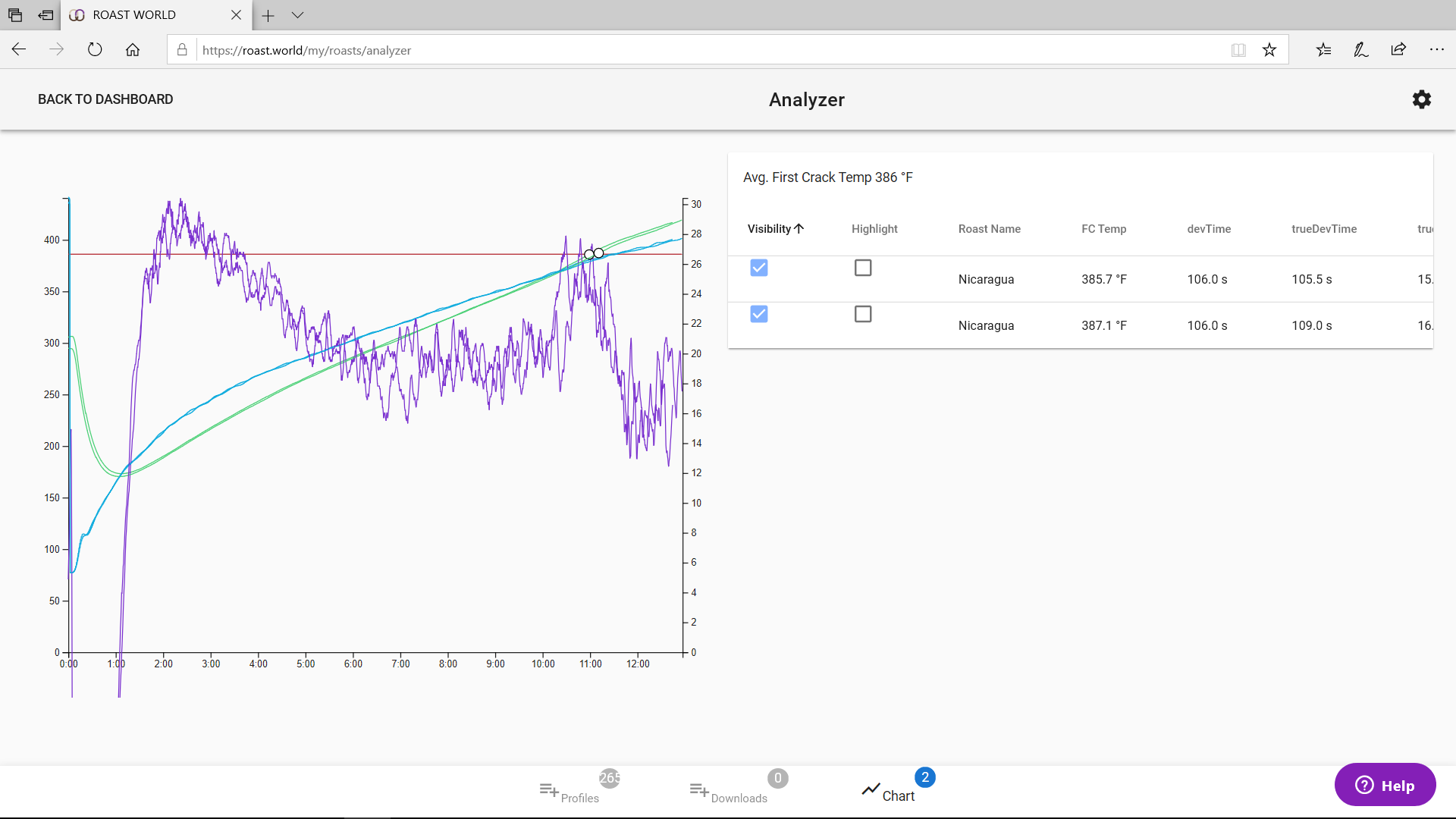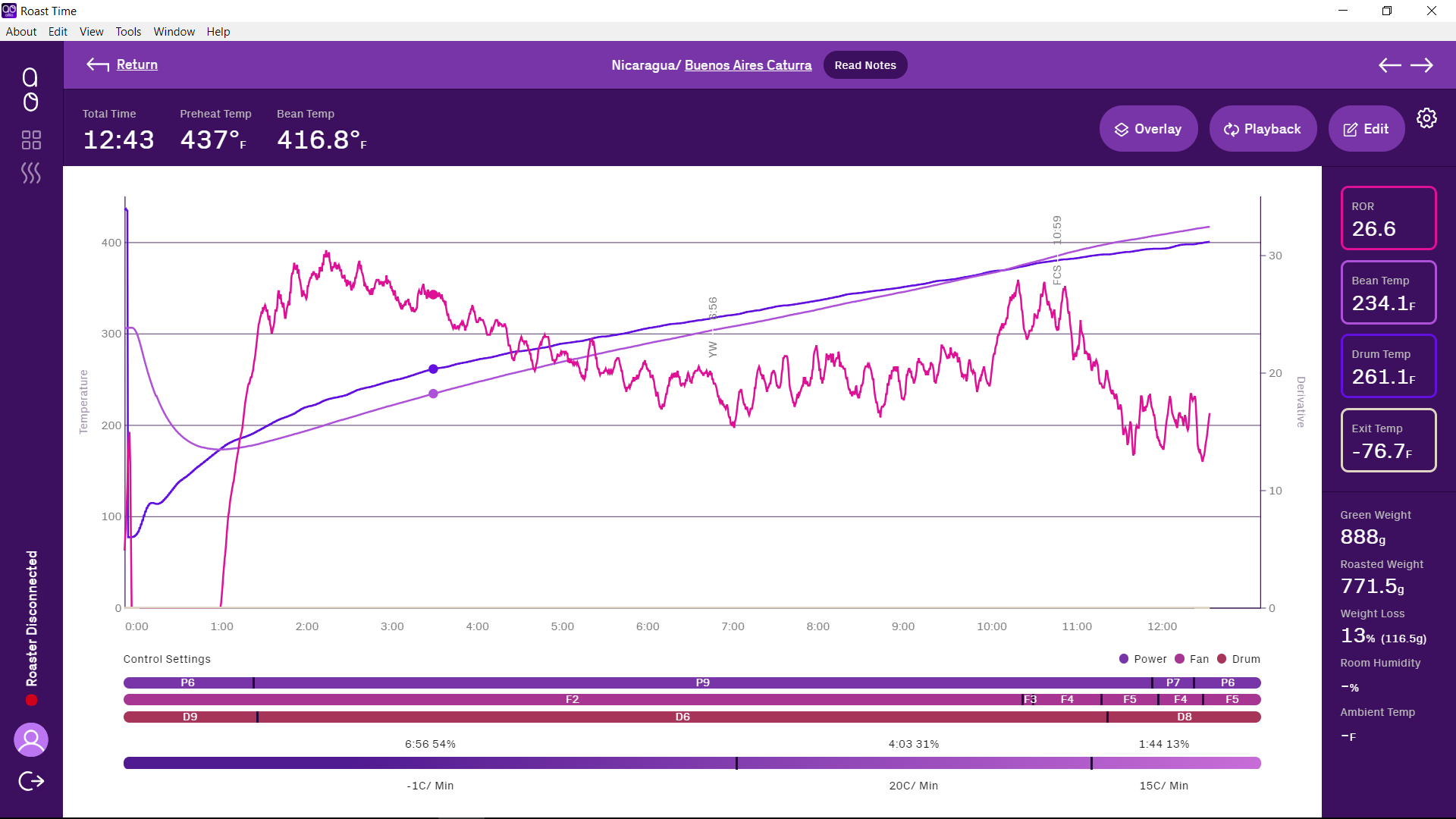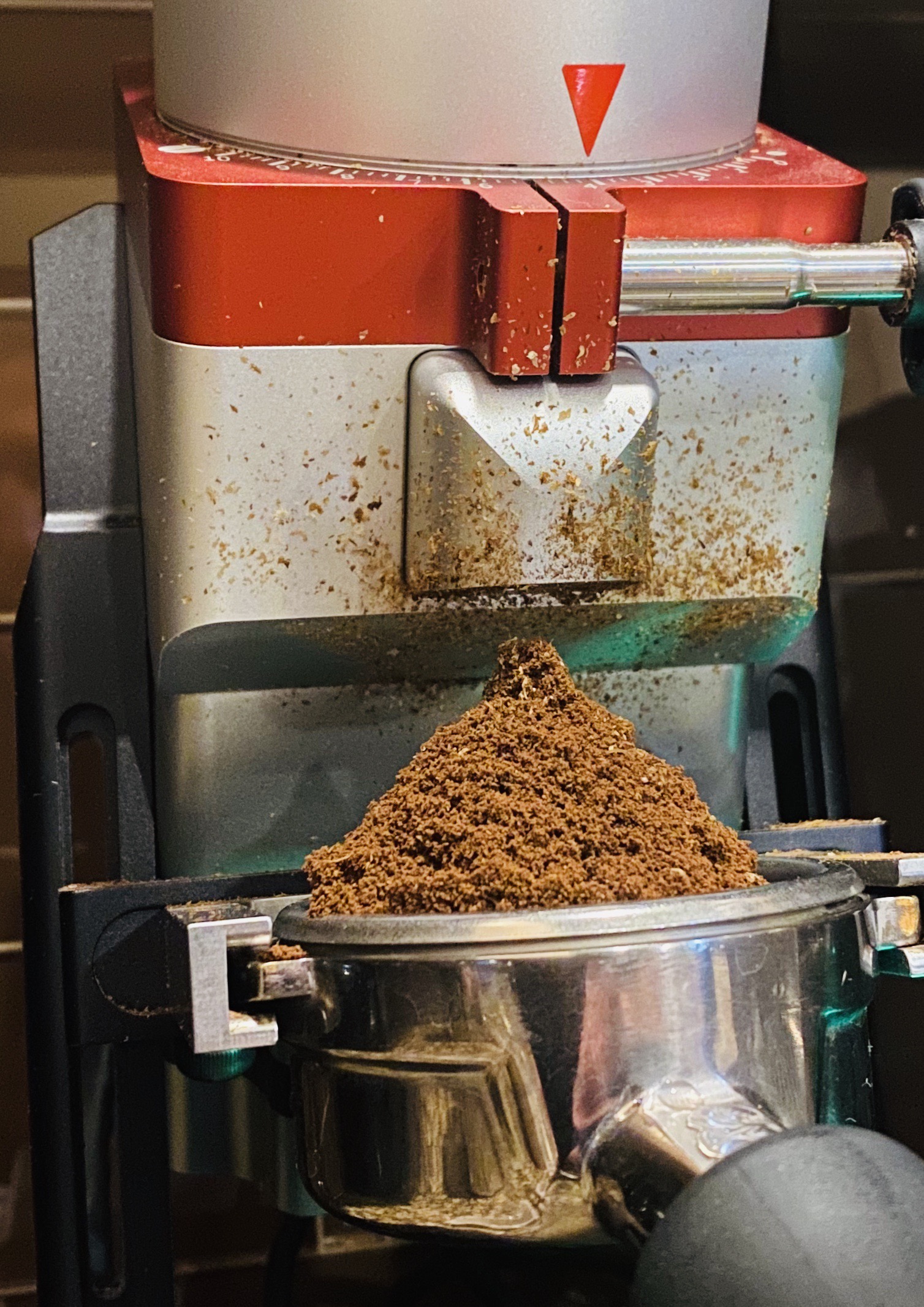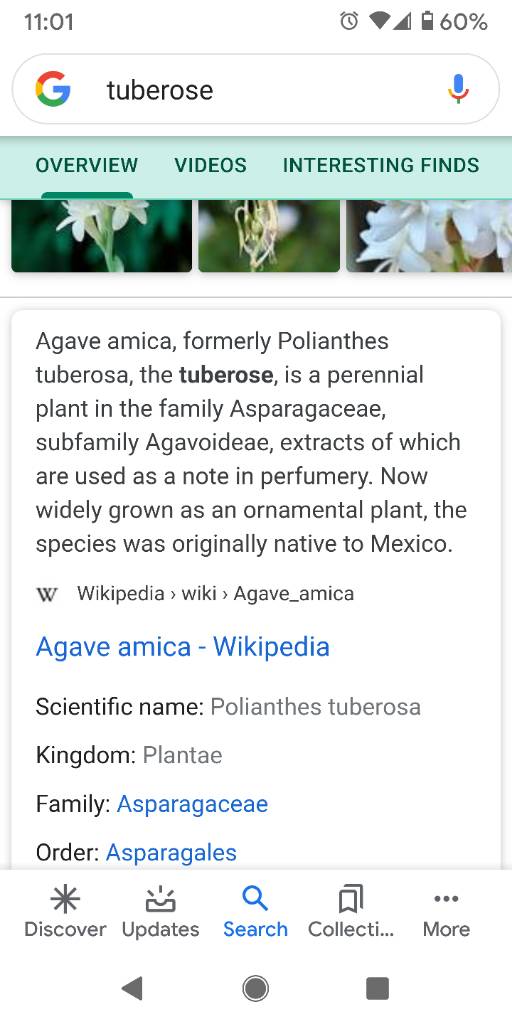This is a single chart for the batch that was at 888 grams. I preheat my drum to 437 degrees F. Upon charging, I let the batch just absorb heat from the drum for a little over a minute before changing my heat setting to be the most powerful I can get on the bullet, but I drop my drum speed, for the majority of the roast, and I keep my air flow low. Looking at the bars underneath the graph, first bar is "P" the number associated with it is the setting, so P6 is an intermediate setting whereas P9 is the highest setting. The bar right below that is "F" and is for the fan. Bottom one is "D" for drum speed. Both of those are the same for settings, 1 being lowest, and 9 being strongest. At the bottom of the chart, you will notice time increments in 1 minute intervals. So, looking at this you can see I charged, let the beans absorb heat for just a little over a minute then hit with power and slowed my drum, while never messing with the airflow.
Lines in graph:
Dark purple is ET
Light Purple is BT
Red is power
This is relevant btw....bullet owners are aware of the differences but this gets it close enough to what most are comfortable with or familiar with for everyone....
View attachment 664375
At about 10 1/2 minutes I do change the airflow, as I want to slow the speed at which my temperatures are about to hit with 1st crack, and as you see at 10:59, first crack does occur. I change airflow (the "F" numbers)again to keep it, to what I call my sweet spot, and just adjust accordingly. Past 11 minutes I also change the drum speed, as I want to increase the effect of the airflow thru the beans, so I make them tumble faster to simulate that. Very close to the end of the roast, when I am sure that the caramelization I want to occur, has in fact occurred, I reduce the power setting...
















![Craft A Brew - Safale BE-256 Yeast - Fermentis - Belgian Ale Dry Yeast - For Belgian & Strong Ales - Ingredients for Home Brewing - Beer Making Supplies - [3 Pack]](https://m.media-amazon.com/images/I/51bcKEwQmWL._SL500_.jpg)













































